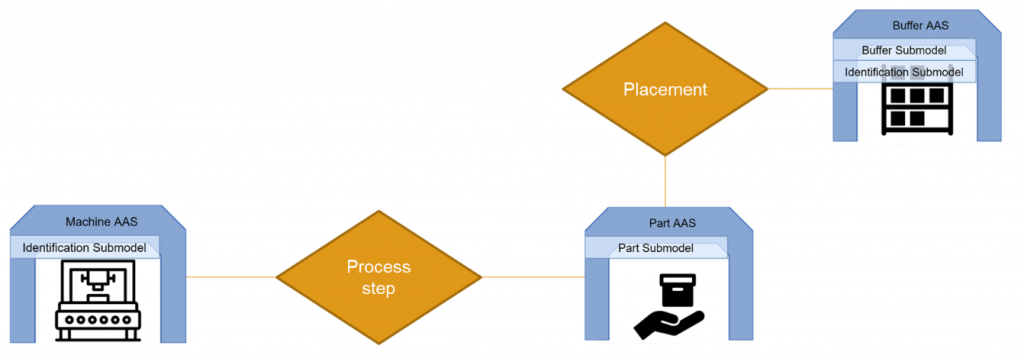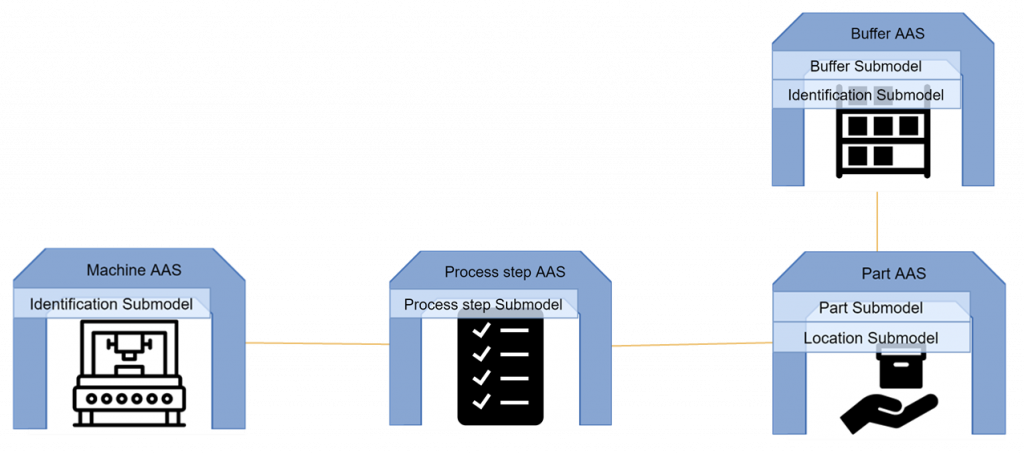An innovation is only as good as its bridge to the established technology. The transformation towards Industry 4.0, especially, needs to be guided on both the level of technological details as well as on the high, conceptual level. In this post, Cornelis Bouter, researcher at TNO (a partner organisation of DIMOFAC) discusses a methodology that aims to improve the collaboration between manufacturers and Industry 4.0 researchers. The corresponding paper was presented at the IEEE CBI Forum last September.
Two boundaries of understanding between manufacturers and researchers
Factory managers and workers often enthusiastically explain the intricate interplay of components in, for example, their injection moulding machines (IMM) located on their shop floor. At some point, I get lost in the details and we reach the barrier of my understanding as a researcher.
My mind then goes in another direction, creating visions of connecting the machine status to an automated guided vehicle and to the ERP system, in a way that parts are delivered just in time to the next machine.
To do that, the first requirement would be a common interface that lets factory assets of various types (e.g., ERP system, operators, machines, and parts) communicate with each other, as promised by the Industry 4.0 Asset Administration Shell[1] (AAS).
However, just mentioning the AAS is probably enough to lose my audience made of manufacturers, similarly to what happens to me when I hear of all the IMM subtleties.
The same people so enthusiastically explaining their injection moulding machine, cannot adapt the machine in question to Industry 4.0 technology and standards. And how could I expect them to if there is no mutual understanding? We need a proper methodology to bridge this gap and make sure Industry 4.0 researchers and manufacturers can collaborate efficiently.
The benefits of a methodology for efficient collaboration
One of the main outcomes of the research led in the framework of the DIMOFAC initiative is the building of a Common Information Model (CIM) that provides Industry 4.0-compliant models[2] for various types of factory assets. This requires collaboration between various fields of expertise: factory knowledge, process integration, data modelling, and Industry 4.0 research.
The methodology our paper proposes (figure 1), clarifies roles and responsibilities, separates concerns, and outlines the main tasks. Thereby, it aims to make the process of developing Industry 4.0 models more effective.

The primary separation of concerns is achieved by having a technology-agnostic knowledge representation phase[3] before submitting the result to the Industry 4.0-compliance phase. This can provide several benefits such as:
- Explicit requirements analysis: know what you want to implement before actually implementing it.
- Less time spent on knowledge exchange: the factory manager doesn’t need to become an Industry 4.0 expert and vice versa.
- Holistic outlook: this methodology identifies a set of interconnected Industry 4.0 models instead of a single one, as a complementary methodology does.
- Reusability: the Industry 4.0-agnostic model may be used for another purpose, or a previously developed model may be reused.
Example application
The following simplified Entity-Relationship model[4] may have been developed by both factory and modelling experts, collaborating together and following best practices of the respective modelling paradigm. The entities are the grey squares, the relationships are orange diamonds, and the attributes (also known as properties) are orange circles:

The Industry 4.0 expert enters the procedure only when this model has been positively evaluated by the manufacturer. The distinction between entities and relationships provides a rule of thumb:
- Entities are assets managed by their own Administration Shell.
- Relationships may require their own Administration Shell depending on their function, which we will get to later.

The attributes can then be ordered into various Submodels[5], making sure to separate them by functionality to facilitate reuse in two directions:
- Backwards: identify existing Submodels that can be reused, such as Nameplate, Technical Data, or a Submodel in the DIMOFAC Common Information Model.
- Forwards: make custom models generic enough for future reuse by other partners and in different use cases.

This leaves us to map the Relationships to the Industry 4.0 architecture, which boils down to the following question: “Is the asset important enough to merit its own Administration Shell?”
We must decide on both relationships.
- The Process step is a major concept in daily machine scheduling. Although virtual, it feels tangible from a planning perspective. Therefore, we decided to model a separate Administration Shell for the process step.
- The placement of a part at a particular buffer is not an asset by itself and it only has meaning through the associated part and buffer. We therefore decided to model it as a Submodel named Location on the Part AAS.

This last step finalises the translation of an Industry 4.0-agnostic model to an AAS architecture, after which we can work on the implementation. At various steps in the process, we may run into problems that require us to revisit the knowledge representation phase or the Industry 4.0-compliance phase. Development remains an iterative process, with or without a methodology.
The outlook
Altogether our work towards a methodology aims to facilitate the low-level collaboration between Industry 4.0 experts and factory experts by:
- Translating each other’s worlds
- Focusing the requirements analysis on a specific use case
- Making reusability an explicit concern
In the DIMOFAC project, this methodology can improve communication between the Research & Technology Organisations (RTOs) and the industry partners. Our experiences continuously lead to additional best practices, considerations, and tasks, to ensure a living methodology.
[1] The Asset Administration Shell is the digital representation of any factory asset, including, but not limited to, machines, equipment, products and raw materials, factories, (business) processes, and software.
[2] In this context, a model would be an illustration showing how some concepts of a factory are connected to each other (see for instance figure 2).
[3] Being “Technology-agnostic” implies that Industry 4.0 considerations and definitions do not need to be taken into account but we assume that Industry 4.0 approach will be effective.
[4] “Entity Relationship Model is a graphical approach to database design. It […] defines data elements and their relationship for a specified software system” (Source: What is ER Modeling? Learn with Example).
[5] A Submodel is a technical term used in the AAS context. It is a selection of data elements concerning a single functionality: for example, for Energy Efficiency, for general Machine Identification, for Maintenance.

